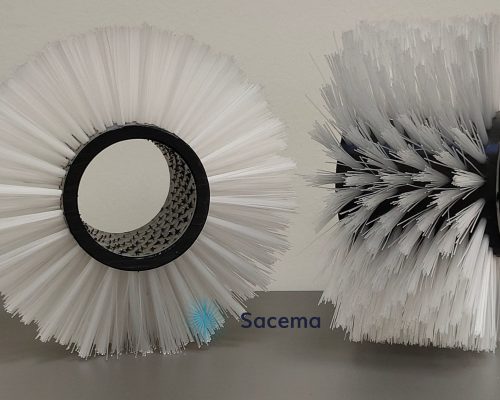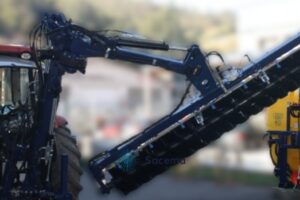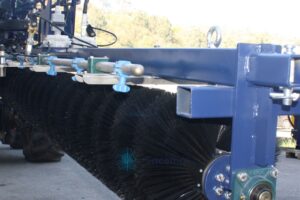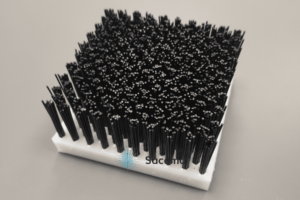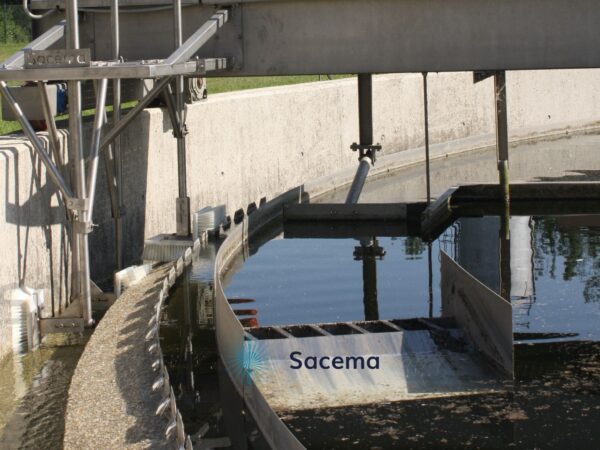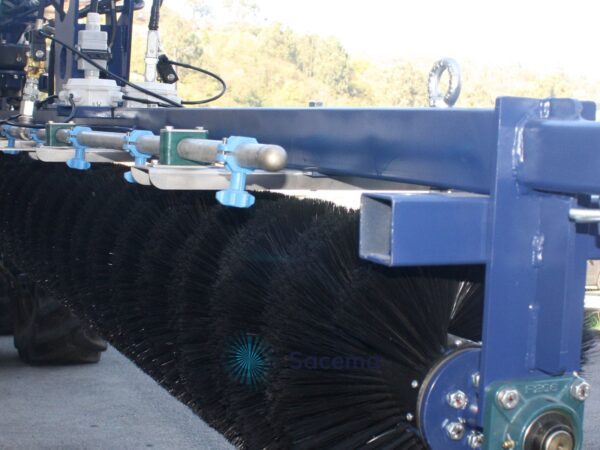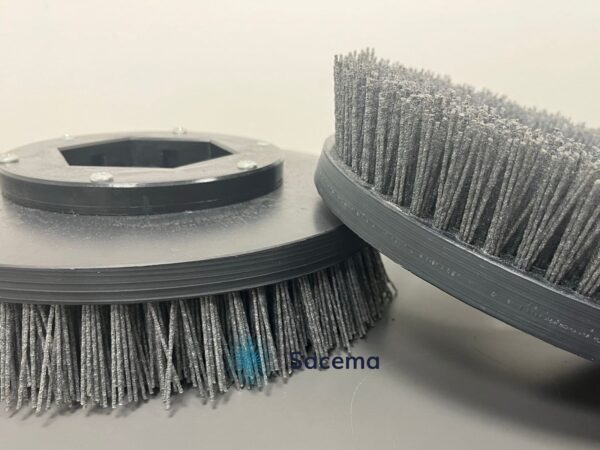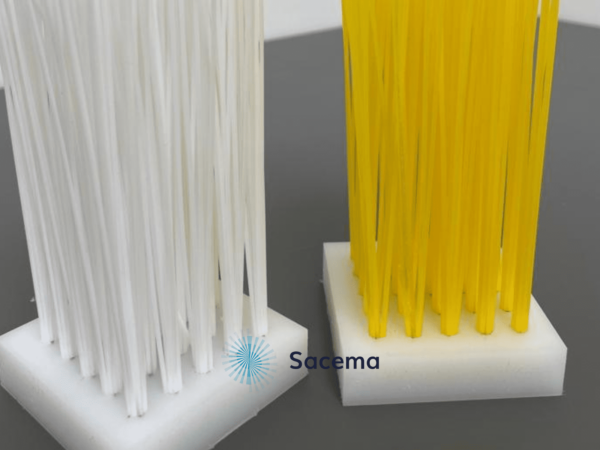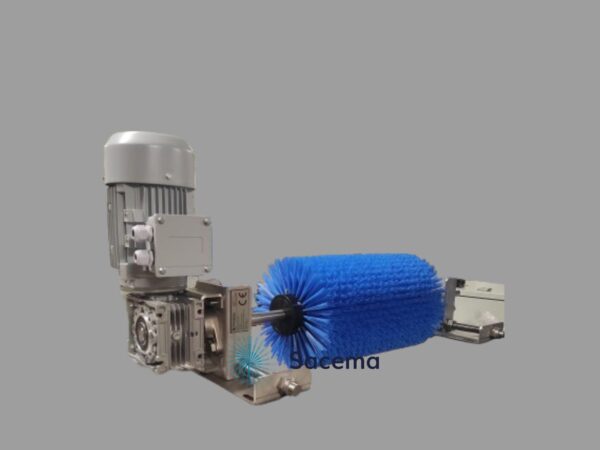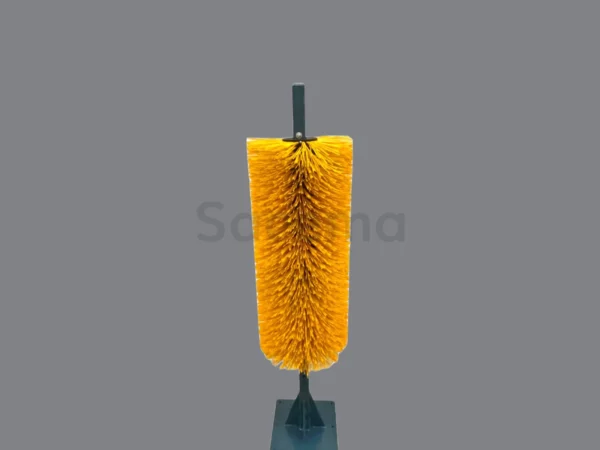The origin of cheese cleaning
Cheese is one of the oldest foods consumed by humanity, was born from the processing and obtaining of milk derivatives, which the first shepherds learned by experimentation as they tamed herbivorous animals.
Due to the cheese-making process, which is still very traditional in its ingredients (ferments, milk, and rennet), and in its procedures, it is necessary to clean the rind in its final stages, which has previously undergone a process of salting and maturation.
The cheese, during its maturation phase, will generate, depending in the salting ingredient and the maturation conditions, traces of mould, fat or salting on the rind, which need to be cleaned.
All the old cheese makers, and today’s more artisanal cheese dairies, clean the rind of the cheese with damp cloths or hand brushes to remove the salting or to polish the surface to make it more palatable to consumers, or to re-salt and further mature in the best conditions.
Mechanisation of cleaning, the cheese brusher and cheese washer
As cheese dairies have modernised and grown in production capacity, they have evolved and mechanised their processes. In the quest to gain productivity, quality, control, and safety, reducing the handling of cheese, a multitude of machines have been developed for the cleaning of cheese.
The different manufacturers of machines for the cheese manufacturing food industry have developed their own machines with their own constructive characteristics, but with a common denominator: the use of industrial brushes both for washing, with a cheese washer, and for brushing the cheeses, with a cheese brushing machine.
Some manufacturers have opted for machine designs in which the cheeses enter through a chute, advance along a machine that incorporates cylindrical industrial brushes which, as the cheese advances through the machine, brush the product on all surfaces long enough to clean it, but at the same time with the necessary gentleness to avoid damaging the rind.
The feed can be motorised or pushed by the cheeses that want to enter the machine, although the brushing is always motorised, as the brushes must rotate while brushing the surface of the cheese and need to be powered.
Other machines have opted for designs in which the cheeses are introduced into an individual or collective drum, in which the cheese is immobile, and the brushes rotate around the cylindrical cheeses.
Depending on the type of cheese, and especially its surface, it can be dry or wet brushed, and additional processes such as greasing or cheese labelling can be added.
The machines are designed with the following requirements being technological depending on the needs of use:
- Effectiveness, in other words that the result of the cheese cleaning is effective and objective.
- Performance: must clean the necessary quantity of cheeses per unit of time to ensure that the cheese dairy has sufficient cleaning capacity.
- Quality: the cheeses must be perfectly clean, without exception and over their entire surface.
- Safety: the machine must be perfectly safe both for the people who handle it and for the people who will be fed with the cheese processed by the machine, avoiding cross-contamination with other foods as much as possible and using only materials and components certified for food contacts.
- Low energy consumption, as it has the minimum motor that ensures the cleaning of the cheese with the lowest possible energy consumption.
- Connectivity. The cheese cleaning machine can be connected to a digital system that controls and monitors the manufacturing process and provides important process data: identification and traceability of each cheese that passes through it, with the time and measurement of working conditions, as well as recording any other relevant information that makes the technology help to improve the process.
- Robotisation. Human handling of the cheeses should be kept to a minimum and in processes that add value, so the process should be automated, especially in the incoming and outgoing loader of the cheese cleaning machines.
The technical brushes of the cheese brusher and cheese washer
The industrial brushes that equip these machines, specially designed for the cleaning of cheese, are cylindrical and have some differences with the rest of the cylindrical brushes of other manufacturing industries.
As they are in contact with food, they must be manufactured according to the guidelines of the FCA (Feed Chain Alliance), which establishes which materials are compatible.
Its main characteristic is that the use of carbon steel, even with a zinc or brass anti-corrosion coating, is forbidden because of the health hazard of rust, and only stainless steel must be used as the material for the brush tuft staples.
Not just any filament can be used to manufacture these technical brushes for cheese brushing machines, they must be made of polyamide compatible for the food industry, which is often blue in colour to identify any filament that comes loose from the brush in the process and remove it from the food.
Also, the bases of the cylindrical brushes must be made of polyethylene, either solid or tubular, to ensure that the brushes are manufactured using materials compatible with the requirements of food industry.
The hardness of the brushes used for the cheese brushing machine is medium, neither too hard nor too soft, and polyamides in the cross-section range between 0,30 for fibre lengths of less than 50 mm and 0,70 mm for 100 mm or more are generally used, using in most cases, the intermediate sizes.

